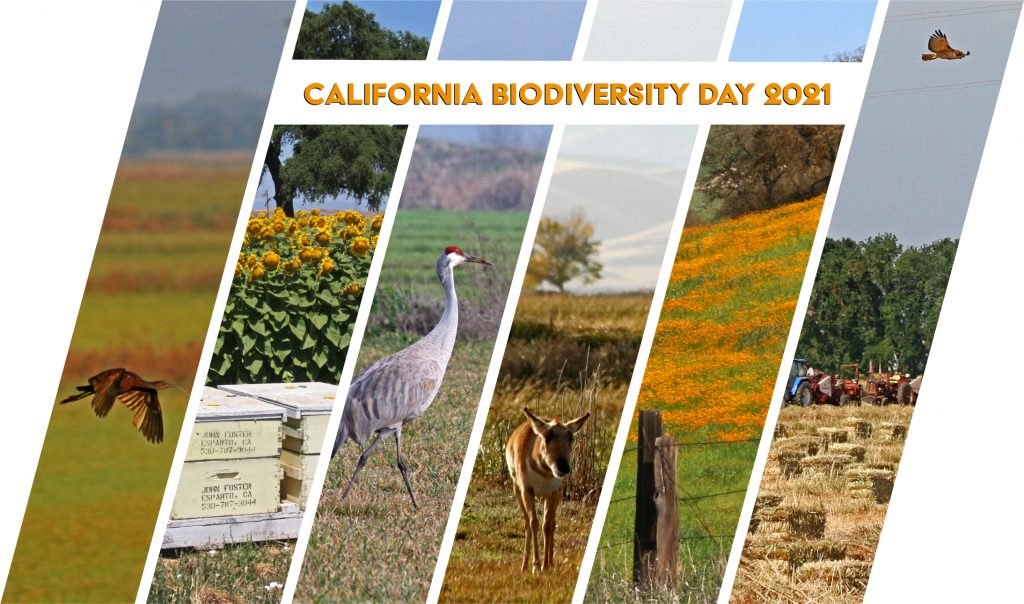By CDFA Secretary Karen Ross
Today is California Biodiversity Day, and CDFA is pleased and proud to recognize this day along with the Natural Resources Agency, the Department of Fish and Wildlife, and other government agencies and partners that spend every day working hard to restore, to preserve and enhance California’s biodiversity.
Our state is a biodiversity hotspot — we have 1,500 species that are only found here in California, the most of any other state; we have a fabulous Mediterranean climate, one of only five in the world; we have the highest point and the lowest point in the continental US; and we have multiple microclimates that contribute to our biodiversity.
Biodiversity is the foundation for healthy, thriving agricultural production system. Our farmers are right there on the edge of natural working landscapes, food security, and interacting with our natural environment, and it all starts with soil. We sometimes forget that a quarter of diverse species are under our feet… in soil. One handful of soil contains more microorganisms then all the people on the globe. That’s pretty remarkable!
Our farmers take care of that soil with a number of different practices. They are always looking to sequester organisms that will give them longer-term productivity by storing carbon in the soils, and that increases water holding capacities, stops erosion, and helps to preserve biodiversity. It also improves the resiliency of our plants and helps us fight climate change.
I’m really pleased that CDFA’s Healthy Soils Program is a key part of the state’s biodiversity initiative across agencies. We have been able to invest more than $40 million in incentive grants to our farmers to use compost to sequester carbon and plant cover crops, hedge rows, riparian habitat and pollinator habitat, all while reducing greenhouse gas emissions and building up our productivity and sustainability.
Here are a couple of specific examples, out of many — almond growers have put in hundreds and hundreds of acres of pollinator habitat, and rice growers have spent the last two decades making their rice fields a winter home to a multitude of species along the Pacific Flyway.
In closing I would like to reiterate that biodiversity is essential in California. It makes our state a special and unique place, and I call on all of us to share a commitment to preserve it, restore it and enhance it. Let’s celebrate our biodiversity today and every day!



